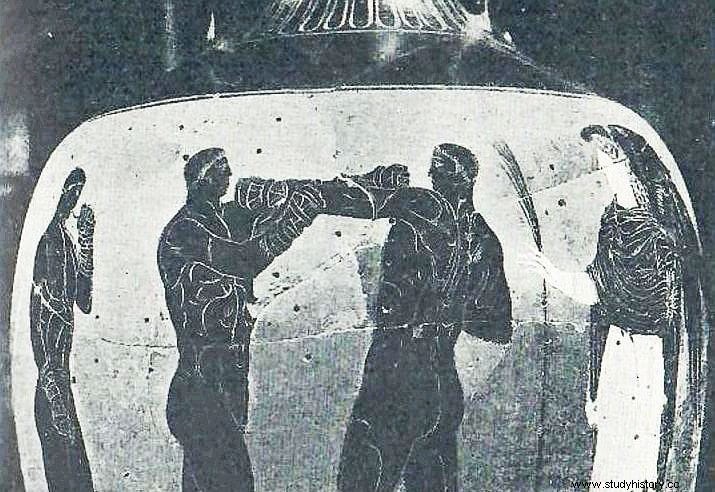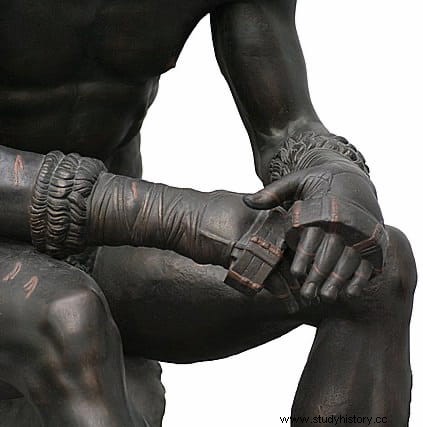The British site of Vindolanda continues to provide archaeologists with pleasant surprises. In February 2018 it was announced that last summer, to the fantastic finds of writing tablets, swords, shoes, combs and dice, we must add the only preserved Roman boxing gloves.
Initially, the researchers who found the two pieces of leather highlighted their unusual shape, different from anything found so far. Further analysis revealed their true function.
As indicated in the press release published on the official website of the excavation project, unlike modern boxing gloves, they have the appearance of protective bands, designed to comfortably cover the knuckles, protecting them from impact .

They are not exactly the same. The larger of the two is cut from a single piece of leather folded on itself to form the cavity into which the hand was inserted, and lined with a protective material to absorb shock. It is heavily worn in the contact area, which was repaired with a circular patch.
The smaller glove was found in perfect condition, but this time it is stuffed with a kind of coil of hard twisted leather. Interestingly, it still retains the impression of its owner's knuckles. Both fit perfectly in the hands of a modern man.

Archaeologists think they may be training gloves, a version of the caestus , the type of glove that was used in professional combat and that was filled with metal pieces, spikes and iron plates, which is the equivalent of the current fist of steel .
Boxing matches were a common practice in the context of the Roman army, either as training or as a means of leisure linked to betting. In fact, there are numerous Roman sculptures, mosaics and paintings in which specimens similar to those found are represented.

The gloves, which are the only ones of their kind found so far, have been dated to around 120 AD. and would therefore have about 1,900 years. They were found under the 4th-century fort at the Vindolanda site, south of Hadrian's Wall near Hexham, Northumberland, in what is already one of the most important Roman military sites in Europe.
Fonts
Vindolanda Charitable Trust / The Guardian.
